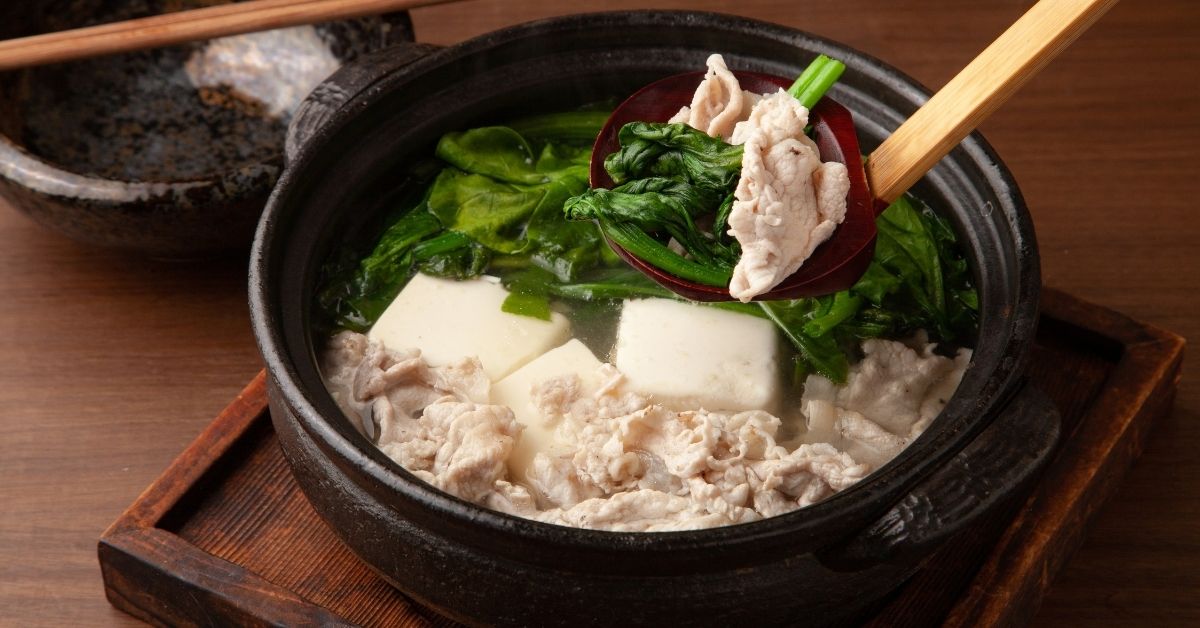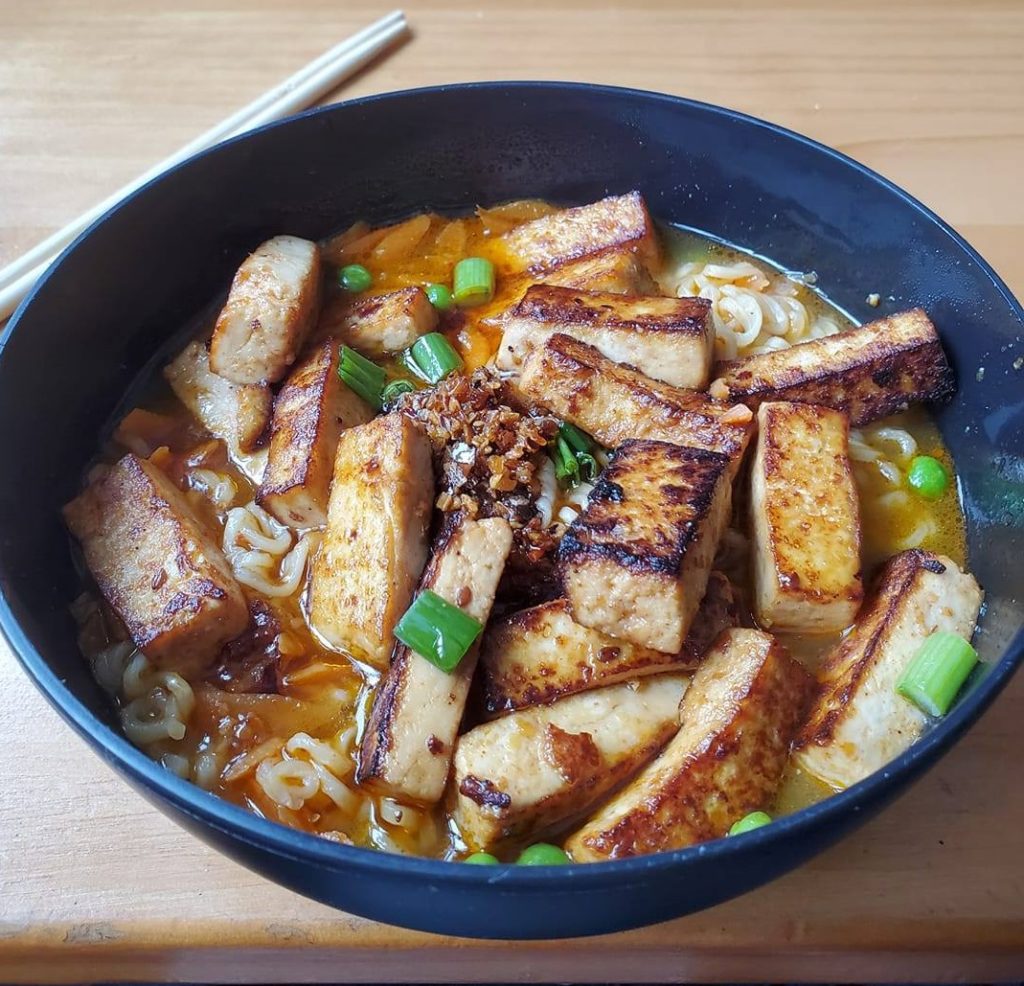Vegetarian Japanese cuisine has emerged as a culinary force, captivating taste buds worldwide. Tofu, a versatile and nutritious soybean-based ingredient, takes center stage in many of these delectable dishes. With its ability to absorb flavors and its rich protein content, tofu is a culinary chameleon, adapting seamlessly to a wide range of vegetarian Japanese recipes.
From savory appetizers to hearty main courses, comforting soups to indulgent desserts, tofu’s versatility shines through. This comprehensive guide delves into the world of vegetarian Japanese tofu recipes, exploring their ingredients, techniques, health benefits, and creative variations.
Introduction to Vegetarian Japanese Tofu Recipes
Vegetarian Japanese cuisine has gained immense popularity in recent years, captivating taste buds with its unique flavors and textures. At the heart of many vegetarian Japanese dishes lies tofu, a versatile and nutritious soybean-based ingredient. With its mild flavor and ability to absorb surrounding flavors, tofu serves as a blank canvas for culinary creativity.
Tofu is an excellent source of protein, iron, and calcium, making it a valuable addition to any vegetarian diet. It is also low in calories and fat, contributing to its health benefits. In Japanese cooking, tofu is prepared in a variety of ways, including grilling, frying, simmering, and steaming.
Versatility of Tofu in Japanese Cooking
Tofu’s versatility shines in Japanese cuisine, where it can be used in a wide range of dishes, from appetizers to main courses and desserts. It can be marinated and grilled for a smoky flavor, fried until crispy for a satisfying crunch, or simmered in a flavorful broth for a comforting meal.
Tofu’s ability to absorb flavors makes it an ideal ingredient for sauces and marinades, allowing it to soak up the essence of its surroundings.
Types of Vegetarian Japanese Tofu Recipes

Vegetarian Japanese tofu recipes encompass a diverse range of dishes that showcase the versatility of tofu as a meat substitute. These recipes can be categorized into various types, each offering unique flavors and culinary experiences.
The following are some popular categories of vegetarian Japanese tofu recipes:
Appetizers
- Agedashi Tofu: Deep-fried tofu cubes served in a flavorful broth, often garnished with grated ginger and scallions.
- Edamame: Steamed soybeans in their pods, sprinkled with salt.
- Miso Soup: A traditional Japanese soup made with dashi broth, miso paste, and tofu cubes.
Main Courses
- Mapo Tofu: A spicy and savory dish made with tofu, ground pork, and a spicy sauce.
- Teriyaki Tofu: Tofu grilled or pan-fried in a sweet and savory teriyaki sauce.
- Yakisoba: Stir-fried noodles with vegetables, tofu, and a variety of sauces.
Soups
- Nabeyaki Udon: A hot pot dish consisting of udon noodles, vegetables, tofu, and a flavorful broth.
- Zaru Soba: Cold soba noodles served with a dipping sauce, often accompanied by tofu.
- Ramen: A popular noodle soup with various toppings, including tofu.
Desserts
- Anmitsu: A sweet dessert made with agar jelly, red bean paste, and tofu cubes.
- Kinako Tofu: Tofu topped with kinako (roasted soybean flour) and honey.
- Mizu Tofu: Silken tofu served with a sweet syrup.
Ingredients and Techniques

Vegetarian Japanese tofu recipes rely on a select group of essential ingredients and traditional techniques to create their unique flavors and textures. Understanding these components is crucial for crafting authentic and delicious dishes.
High-quality tofu forms the foundation of these recipes. Look for firm or extra-firm tofu, as they hold their shape better during cooking. Other essential ingredients include soy sauce, mirin, sake, and dashi broth. These provide umami, sweetness, and depth of flavor.
Traditional Techniques
Simmering is a common technique used to infuse tofu with flavors. By gently simmering tofu in a flavorful broth, it absorbs the liquid and becomes tender and savory. Frying is another popular method, creating a crispy exterior while keeping the interior soft and moist.
Grilling imparts a smoky flavor and a slightly charred texture to tofu.
Sourcing High-Quality Ingredients
Using high-quality ingredients is essential for creating authentic Japanese tofu dishes. Look for tofu made from organic soybeans and produced by reputable brands. Choose soy sauce and mirin with a rich, complex flavor. For dashi broth, opt for premium quality bonito flakes or kelp.
Health Benefits of Vegetarian Japanese Tofu Recipes
Vegetarian Japanese tofu recipes offer an array of nutritional benefits that contribute to a balanced and healthy diet. Tofu, the primary ingredient in these recipes, is a versatile plant-based protein source packed with essential nutrients.
Tofu is a rich source of protein, providing all nine essential amino acids required for optimal bodily function. It is also low in calories and saturated fat, making it a heart-healthy option. Furthermore, tofu contains significant amounts of calcium, iron, and zinc, which are crucial for bone health, red blood cell production, and immune function, respectively.
Potential Health Benefits
Incorporating tofu into a vegetarian diet has been linked to several potential health benefits. Studies have shown that tofu may reduce the risk of certain chronic diseases, including:
- Heart disease: Tofu’s low saturated fat content and high fiber content may help lower cholesterol levels and improve heart health.
- Cancer: Tofu contains isoflavones, plant compounds that have been associated with a reduced risk of certain types of cancer, including breast and prostate cancer.
- Type 2 diabetes: Tofu’s low glycemic index may help regulate blood sugar levels and reduce the risk of developing type 2 diabetes.
Tips for Cooking Vegetarian Japanese Tofu Recipes
Cooking vegetarian Japanese tofu recipes can be a rewarding experience, but it requires careful preparation and attention to detail. Here are some practical tips to help you achieve success in the kitchen:
Choosing the Right Tofu
The type of tofu you choose will significantly impact the texture and flavor of your dish. For firmer textures, opt for extra-firm or firm tofu. For softer textures, use medium-firm or silken tofu. Consider the following:
- Extra-firm tofu: Ideal for grilling, pan-frying, and stir-frying, as it holds its shape well.
- Firm tofu: Suitable for soups, stews, and casseroles, providing a satisfying bite.
- Medium-firm tofu: A versatile choice for a range of dishes, including stir-fries, salads, and sandwiches.
- Silken tofu: Soft and delicate, perfect for blending into sauces, desserts, and smoothies.
Achieving the Desired Texture and Flavor
To enhance the texture and flavor of tofu, consider the following techniques:
- Pressing: Removing excess water from tofu improves its texture and allows it to absorb marinades and sauces more effectively.
- Marinating: Soaking tofu in a flavorful marinade before cooking infuses it with additional taste.
- Pan-frying: This method creates a crispy exterior and tender interior, perfect for stir-fries and other dishes.
- Grilling: Grilling tofu imparts a smoky flavor and a slightly charred exterior, ideal for kebabs and salads.
- Baking: Baking tofu results in a crispy crust and a soft, fluffy interior, making it suitable for casseroles and other baked dishes.
Creative Variations and Adaptations
Vegetarian Japanese tofu recipes offer a world of possibilities for culinary creativity. Experiment with different textures, flavors, and cooking techniques to create dishes that are both delicious and nutritious.
Adapt traditional recipes to suit your dietary needs and preferences. For example, replace meat with tofu in stir-fries, curries, and soups. You can also create vegan versions of classic Japanese dishes like ramen and sushi.
Innovative Ways to Incorporate Tofu
- Use tofu as a base for plant-based dips and spreads.
- Crumble tofu into salads for a protein-packed addition.
- Marinate tofu in flavorful sauces and grill or bake it for a crispy texture.
- Blend tofu into smoothies for a creamy and nutritious boost.
- Make tofu “steaks” by slicing it thick and grilling or pan-frying it.
Last Point
Embarking on a culinary journey with vegetarian Japanese tofu recipes is a rewarding experience. These dishes not only tantalize the taste buds but also nourish the body. Whether you are a seasoned vegetarian, a curious omnivore, or simply seeking to expand your culinary horizons, incorporating tofu into your Japanese cooking repertoire will undoubtedly bring joy to your table and well-being to your life.
FAQ Summary
What are some popular types of vegetarian Japanese tofu recipes?
Vegetarian Japanese tofu recipes span a diverse range, including appetizers like crispy tofu karaage and edamame salad, main courses like tofu stir-fries, noodle bowls, and curries, soups like miso soup and zaru soba, and desserts like tofu cheesecakes and mochi.
How do I choose the right tofu for my vegetarian Japanese recipes?
For firm and chewy tofu, opt for extra-firm or firm tofu. Medium-firm tofu strikes a balance between firmness and softness, making it suitable for a variety of dishes. Silken tofu, with its delicate texture, is ideal for soups, dips, and desserts.
What are some creative ways to incorporate tofu into vegetarian Japanese dishes?
Experiment with marinating tofu in flavorful sauces before grilling or roasting it. Try crumbling tofu to create a vegan “ground beef” for tacos or shepherd’s pie. Puree tofu into dips, spreads, or smoothies for a creamy and nutritious addition.
